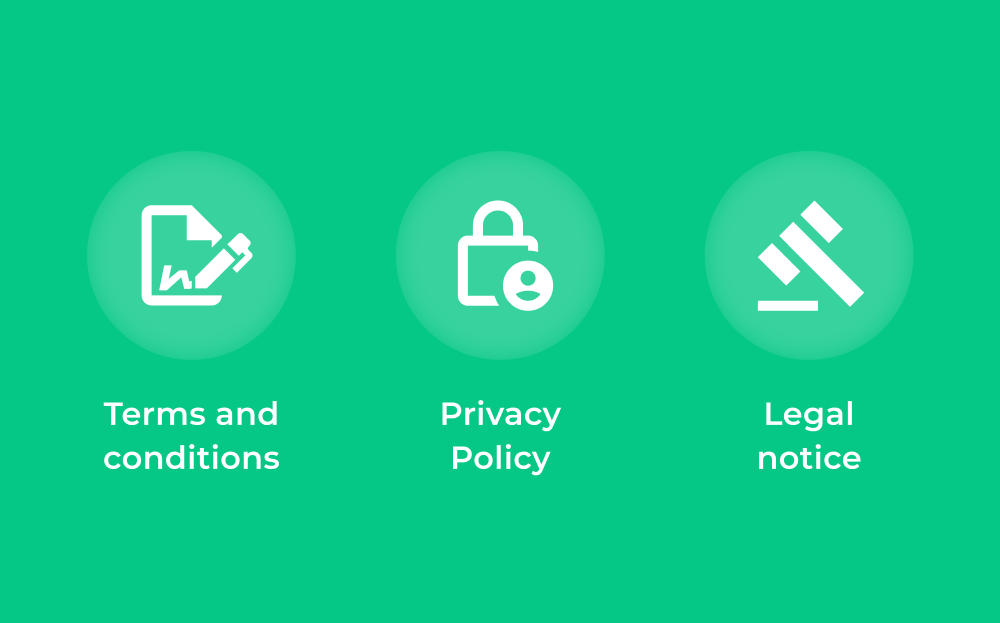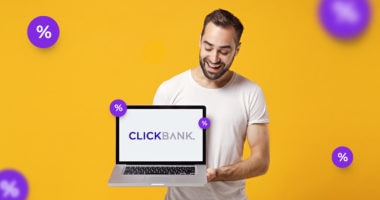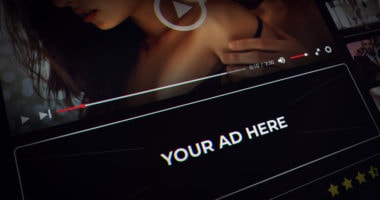Want to get tips on optimal landing pages that will be immediately approved? Read on to get condensed, first-hand knowledge on how to avoid and anticipate the most common landing page content issues which lead to a campaign rejection on a daily basis.
In this landing page tutorial, you will learn about the essential elements that should be avoided or included while creating a landing page.
So let’s cut to the chase!
Landing Page Design
If a user clicked on a creative and was redirected to the next element of your campaign, then it means that you did a good job choosing a main image and a headline of your ad! Now you need to keep on the top of things and do as good – or maybe an even better – a job than earlier!
Your ad already got the visitors’ attention, so now you need to encourage them to buy your product or service. To do this you will need to work a little on the landing page content and also its appearance.

Before we get to the landing page copywriting, let’s briefly discuss the design. You need to remember that the way a website looks is very important. Campaign compliance teams in traffic sources rarely reject campaigns because of the general look of the landing page layout, but it happens sometimes.
Publishers that offer more premium traffic pay attention to all the elements of a website, so it may be worth investing more work to make it look better rather than have it rejected, right? On top of that, beautiful landing pages simply convert better. No matter what you sell and how good your copy is, if you present it in a design straight from the early days of Internet, you won’t get much traction.
General Appearance
While looking for landing page inspiration, make sure that you also pay attention to the general appearance. Well thought-out and built websites look more professional and gain more trust.
Unique Content
This is probably the best tip on how to make your landing page stand out and how to avoid one of the most common mistakes. Don’t just copy what others are doing! Create your own, unique content; this will pay off in the long run. After all, you’re not the only one looking for landing page ideas – other people are gathering inspiration from what they see on the Internet too.
If everyone starts using designs that all look the same, users will get bored of seeing it over and over again. So, get inspiration but don’t simply reproduce the existing content!
If you’re using a landing page builder, remember to add your unique images and narrative in order to modify the landing page template. Keep in mind that unique content is what captures attention!
Website Transparency
Landing page structure should be clear, so that users can easily find the content they are searching for. Make sure that you are using a font that is a decent size to make it easy to read. The spacing between lines is also important. Professional landing page creators will make it easier for you by suggesting appealing landing page layout templates with good space distribution. All you need to do after is to add your images and work on the narrative.
Background
The easiest fix to make your website look one-of-a-kind is changing the landing page background image. It should be catchy, but try to avoid images with overly vibrant colors and too many details.
We recommend it be light and bright but not flashy. Remember that you will add the text on the top of this image, so the content should be visible and easy to read.
Images on the Website
If you’re adding images to your website, you should bear in mind that it will make the loading time longer. So avoid adding too many pictures, especially when they are very similar or use image optimization service. Don’t add images that take up a lot of space on the website (let’s say one that takes up approximately 50% of the screen).

Upload only high quality pictures, and only a reasonable amount. Remember that a huge amount of images makes the website loading time longer, which can be problematic for users. Make sure that your hosting is fast and can handle the expected visitor load.
If you decide to add a lot of images, we suggest making a landing page speedtest to make sure that everything loads properly and quickly.
Welcome Elements
Landing and offer pages are common aspects of digital marketing. A landing page is a publicly available website that describes the product and should encourage users to take a specific action. Usually, a landing page contains a Call To Action (CTA) button which leads to the offer.
An offer page is a website where a user can buy the given product or sign up for a service. Traffic can be sent directly to the offer from a creative or through a landing page.
Most campaigns consist of both: a landing page and an offer page. Since landing pages are usually created or can be modified by a campaign creator, networks can have many requirements for this campaign element.
Advertorial
Ad Exchanges often require additional elements on landing pages. The simplest additions are the words “Advertisement” or “Advertorial”. It should appear clearly and prominently at the top of the landing page.
“Advertorial” is a blend of the words “advertisement” and “editorial”. It simply means that the article is intended to encourage the reader to take a certain action, i.e. to buy a product that is being described on the landing page. Publishers require adding the word “Advertorial” so the reader can be aware that the article is not published by an independent party, but by a person or entity who may be compensated.
Terms and Conditions, Privacy Policy and Contact Us sections
Publishers very often also require the following sections: “Terms and Conditions”, “Privacy Policy” and “Contact Us”. You can also add a “Legal Notice”.
They are usually located on the bottom of the page, but not always. You can add them to the top of the website or anywhere else as long as they are easily visible and accessible to users. And one of the most important parts: these sections should be written in the language used in the country that you’re targeting.

If you collect data from visitors on your site, you need to inform them about it. That’s why you need to add a “Privacy Policy” section where you explain to visitors what kind of information visitors share with you, and whether it is used in any way.
We are sure that you already know this but let’s say it once again just in case: you can store information about users as long as they remain completely anonymous and they cannot be traced using the data that you’ve stored. You should also keep information about them for the shortest amount of time possible.
The “Terms and Conditions” section contains the legal agreements between a service provider and a person who wants to use that service. “Privacy Policy” is legally required, and it’s for the user’s protection. “Terms and Conditions” are not necessarily obligatory, but definitely recommended on a website as this section protects the business – which is you in this case.
The “Contact Us” section should contain an actual email address, phone number or physical address of the party that is selling the product or service (the physical address is especially important when you are promoting financial services). Contact details don’t have to be located in a separate section. They can be included, for example in “Privacy Policy”.
The “Legal Notice” should describe the limitations of your liability that is related to using your website and the information that is included there. Legal disclaimers can be added to the website in a separate section, as a disclaimer on the bottom of the landing page, or included in the “Terms and Conditions” since these two are strongly associated.
Disclaimers
Landing pages and offers should include appropriate disclosures. There is a risk of your campaign being rejected when you do not place this in a visible and easily accessible spot – outside Privacy Policy or Terms and Conditions.
You should always follow the local laws. For example, when running a campaign in the United States, you must adhere to the Federal Trade Commission (FTC) guidelines. In Europe, we highly recommend following the General Data Protection Regulation (GDPR) rules.
Every affiliate campaign should have a disclosure that simply explains what affiliate marketing is and that advertisers are being paid for recommendations. Depending on the campaign topic and promoted offer, adding other disclaimers may be recommended.
For example, you may include a disclosure about possible financial losses in connection with a trading campaign or you may have a disclaimer about the results of using health products. Required disclaimers may vary for each country, so you should do some research before sending a campaign for approval or ask your dedicated account manager.

You also need to remember that publishers and ad networks are continuously trying to improve the quality of their ads and that laws are changing in all countries around the world all the time.
Even if at this moment a disclaimer is not required, it may be necessary even next week or month. Therefore, we strongly recommend adding such elements to landing pages either way. It doesn’t take too much time to do this, and it lowers the possibility of getting a rejected campaign because of a change in policy.
Ultimately, the presence of such elements has a positive influence on the transparency of advertised content and lessens the chance of a campaign getting rejected later on.
What you need to remember:if you’re getting inspiration from some landing page examples, they may be lacking disclaimers, so make sure that your ahead of the game by adding them to your website!
Studies and References
There are few ad exchanges that require studies and references about your promoted product. These should be present on the first visible content/website. Thus, if you are using only an offer page, then some relevant information should be added to that page.
If you also want to use landing pages then please remember that these pages will be the first visible content and therefore you should present your studies there – even if this information is included on the offer page too.

Not all traffic sources require studies about the product, however they are highly recommended. It’s worth mentioning them on the landing page as a study can obviously add credibility.
Video Players With Proper Functionality
Many Publishers, especially those offering more premium traffic on well known, brand websites require video players on landing pages to feature proper functionality i.e. pause and mute buttons, a time bar, and a slider and transcription. The landing page should also include appropriate information and describe the contents of the video.
Unwanted Elements and Practices
There are definitely some elements that negatively affect the transparency of your website. These include suspicious, non-clickable buttons and fake social media comments.
If anything seems illegitimate or redirects to the something other than the content a user was expecting, this can seriously risk your campaign.
The worst thing to do is imitate a recognizable news website; we strongly discourage this practice. Every campaign like this is rejected and continuous breach of network’s guidelines leads to account termination.
Suspicious Software Updates and Downloads
Choose an offer carefully. Study and make sure that the offer is confirmed by the affiliate network or that the direct provider of the offer is a legitimate entity. Verifying it is quite important as annoying pop-ups, new windows opening up in unprotected browsers, flashy banners and more shady practices will likely cause a flagged domain and will eventually lead to such content getting blocked.

Trademark Infringement and Third-Party Endorsements
Content that infringes the personal rights, trademark, service mark, logo, copyright or other intellectual property right is strictly prohibited – unless you can present endorsement or license from the featured brands. This is commonly mention in campaign approval policies of most ad networks, so please avoid sending such content for approval.
You need to be careful while using a logo, a trademark or a company name. Bear in mind that if you use elements that make the website resemble another website too much, it can even be considered an attempt at phishing in some cases. This is why using logos and trademarks of third-parties cannot appear for example:
- in a favicon (known also as a website/tab/bookmark/URL/shortcut icon),
- as a website logo.
If you want to add a logo/trademark that doesn’t belong to you to your website, you need to have official permission in order to use it.
If you want to add trademarks to your landing/offer page, then we recommend adding a section like “As seen on”. You also need to make sure that each trademark redirects to the appropriate article that confirms that it can be used.
Your URL address shouldn’t include any typos that were made on purpose to mislead users and make them think that they just entered a well-known website – when they didn’t.
For example using a domain like foxnevvs.com could be very misleading for Internet users, especially if you add the Fox News trademark in the upper left section of the website. If you take a quick look at it and don’t read it carefully, it may appear to be the official Fox News website. Such practices are not allowed and campaigns that employ them are rejected right away.
Fake or Non-Clickable Elements on the Website
This refers to fake reviews, comments sections, widgets or social media icons as well as fake navigation on the website. Typically these elements redirect to an offer instead of the content that is expected by the user; this is what’s known as fake navigation. Social media icons also should be linked with appropriate websites on social media.
Deceptive User Interface Elements
Here we are referring to chatbots, text boxes, click-to-call buttons on landing pages that do not contain basic information about terms and policy of service. User interface cannot imitate any other trusted websites because it’s deceptive and misleading for end users. Also,, it’s treated as phishing – which is prohibited on all Ad Exchanges.
Fake Countdown Clocks
Fake countdown clocks which make a user think the offer expires sooner than it does, are prohibited with some ad exchanges. This is mostly because the user should be aware and sure of the choice that they are making; they shouldn’t feel falsely pressured to grab an offer.
We also strongly recommend avoiding this though it is still allowed with some traffic sources. So if you want to add a clock to your landing page or offer page, then you should double check whether the given ad exchange allows it.

False Claims and Statements
False claims and statements on landing pages or in any campaign element are not allowed. Many ad exchanges disapprove of overly promising or ”too good to be true” claims – especially when these are visible right away in a landing page header or a headline on your website.
Don’t google ‘landing page headline examples’! Create one that will be yours and will be unique! And remember that if you add any claims,you should provide users with proof in the form of studies and references – especially for Health and Nutrition campaigns.
Final Remarks
If you follow the tips that we provided here, we can guarantee that your landing pages will be approved on most ad exchanges without a problem!
It is not only about having your landing page approved, it is also aobut it bringing you a lot of conversions. Once you have your camapign approved, you can track it with Voluum, adding a layer of data to your guesswork. With Voluum, you can A/B test your landing pages and automate the run of your campaigns.




